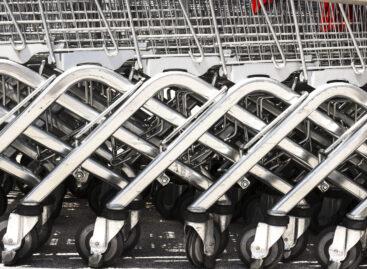SME Strategies and Industrial Real Estate Market Responses in 2025
Hungarian small and medium-sized enterprises (SMEs) are struggling to survive in a challenging economic environment – balancing inflation, financing obstacles and investment pressure. The HAD Real Estate Business Brunch, held on May 15, sought practical answers to these questions at the Ipar Napjai exhibition. RaktárAD, the organizer of the event, announced its new projects at the event, which specifically respond to the needs of SMEs.
Economic turbulence: where do SMEs stand?
The 80% domestic inflation of the past decade – which is well above the EU average – has severely damaged micro and small enterprises. Although the number of enterprises has increased, the real productivity growth has mainly occurred in more capital-rich medium-sized enterprises. Micro and one-person companies are often excluded from financing because they do not meet the creditworthiness requirements of banks.
Instead of financing, a necessity to survive
According to János Kovács (BKIK), the disproportionality of the current support system further widens the gap between multinational companies and domestic SMEs. In addition, the majority of enterprises lack strategic planning, digital presence, and often basic competencies. The Sándor Demján Program aims to remedy this situation by offering community and financing tools to the smallest ones.
Industrial real estate: a shift in focus instead of waiting
Mariann Micskei (Goodwill Energy Zrt.) spoke about the fact that large developments are being postponed due to inflation and market uncertainty – instead, the extension of existing lease contracts is typical. Many people are not yet exploiting the potential of energy efficiency, but interest in more sustainable forms of operation (e.g. PPA) is growing.
New types of warehouse solutions
RaktárAD is developing new-generation industrial condominiums that aim to offer a modern but affordable solution for SMEs. The incubator-like concept provides both an infrastructural background and connections to professional organizations (e.g. BKIK, VOSZ).
Ernő Hadnagy, president of HAD Group, announced: After Alsónémedi and Vecsés, Nagytarcsa and Bag will follow, but they are also initiating a strategic opening towards the Dunakeszi and Budaörs regions.
Where is it worth looking for a location in 2025?
According to Dávid Heim (Otthon Centrum), Budapest and its surroundings, as well as major cities with motorway connections – Debrecen, Szeged, Nyíregyháza – are still the most active. These locations offer a good return on investment in the long term, especially in the case of self-use halls optimized for the location.
Sectors in motion
So far this year, we have seen mainly contract extensions in the rental market, said Milla Kalmár (108 Real Estate). The main players in the transactions are FMCG, healthcare-related companies, and electromobility businesses. Some automotive manufacturers – such as BYD or battery plants – have restrained previously expected expansions, but demand remains buoyant.
Industrial real estate: long-term value preservation
In contrast to the 300% increase in the price of residential real estate, industrial real estate has shown a 200% increase in value in the past decade, while they are characterized by lower maintenance costs and better rental yields.
RaktárAD aims to offer not only real estate, but also a development platform for domestic small and medium-sized enterprises through strategic expansion.
Related news
K&H: December SZÉP card top list: is a trend reversal expected this year?
🎧 Hallgasd a cikket: Lejátszás Szünet Folytatás Leállítás Nyelv: Auto…
Read more >MKIK: SMEs can also turn to conciliation bodies from January
🎧 Hallgasd a cikket: Lejátszás Szünet Folytatás Leállítás Nyelv: Auto…
Read more >Marketing spending is decreasing, customer base is increasing – what is the secret to the success of SMEs?
🎧 Hallgasd a cikket: Lejátszás Szünet Folytatás Leállítás Nyelv: Auto…
Read more >Related news
Christmas shock in commerce: for the first time, we can pay with bank cards in fewer places
🎧 Hallgasd a cikket: Lejátszás Szünet Folytatás Leállítás Nyelv: Auto…
Read more >Hungarian Confectionery Manufacturers Association: trends in 2025 and prospects for 2026
🎧 Hallgasd a cikket: Lejátszás Szünet Folytatás Leállítás Nyelv: Auto…
Read more >Most grocery chains will be open until noon on December 24th
🎧 Hallgasd a cikket: Lejátszás Szünet Folytatás Leállítás Nyelv: Auto…
Read more >







